Panamic Soldierfish, Myripristis leiognathus
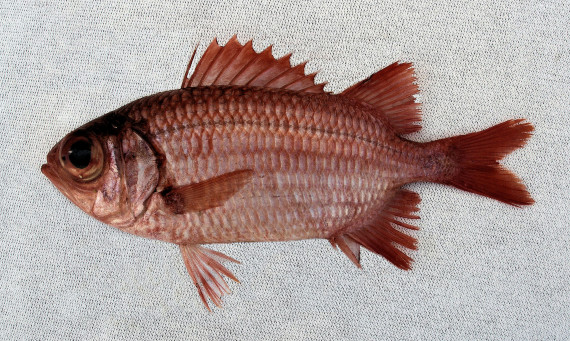 Panamic Soldierfish, Myripristis leiognathus. Fish provided by the commercial fishermen of the greater Los Cabos area, Baja California Sur, July 2010. Length: 14 cm (5.5 inches).
Panamic Soldierfish, Myripristis leiognathus. Fish provided by the commercial fishermen of the greater Los Cabos area, Baja California Sur, July 2010. Length: 14 cm (5.5 inches).
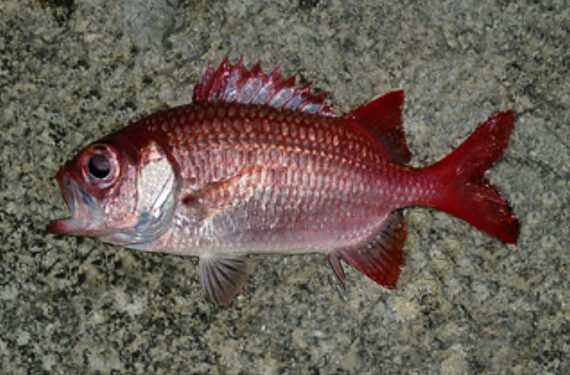 Panamic Soldierfish, Myripristis leiognathus. Fish caught from coastal waters off Cabo San Lucas, Baja California Sur, July 2017. Length: 15 cm (5.9 inches). Catch, photograph and identification courtesy of Eli (obsessiveangling.wordpress.com).
Panamic Soldierfish, Myripristis leiognathus. Fish caught from coastal waters off Cabo San Lucas, Baja California Sur, July 2017. Length: 15 cm (5.9 inches). Catch, photograph and identification courtesy of Eli (obsessiveangling.wordpress.com).
 Panamic Soldierfish, Myripristis leiognathus. Fish caught from within the Puerto Los Cabos Marina, Baja California Sur, April 2022. Length: 18 cm (7.1 inches). Catch, photograph and identification courtesy of Luke Ovgard, Klamath Falls, Oregon.
Panamic Soldierfish, Myripristis leiognathus. Fish caught from within the Puerto Los Cabos Marina, Baja California Sur, April 2022. Length: 18 cm (7.1 inches). Catch, photograph and identification courtesy of Luke Ovgard, Klamath Falls, Oregon.
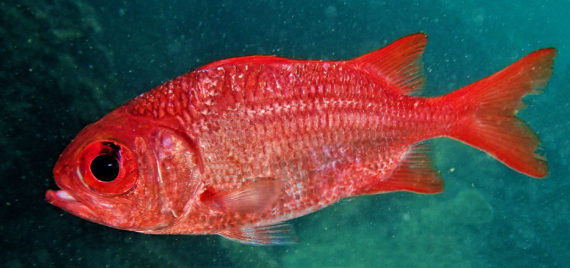
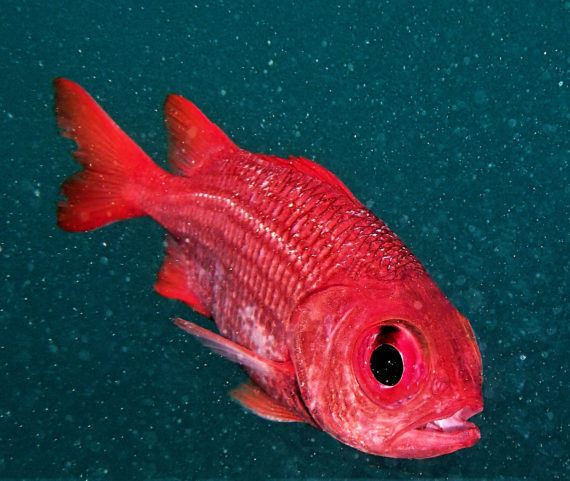
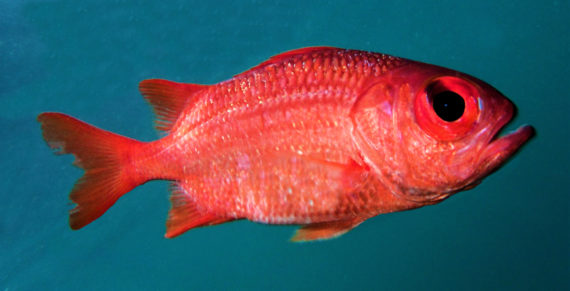
 Panamic Soldierfish, Myripristis leiognathus. Underwater photographs taken in Zihuantanejo Bay, Guerrero, March 2018. Photographs courtesy of Ron Woheau, Zihuantanejo.
Panamic Soldierfish, Myripristis leiognathus. Underwater photographs taken in Zihuantanejo Bay, Guerrero, March 2018. Photographs courtesy of Ron Woheau, Zihuantanejo.
 Panamic Soldierfish, Myripristis leiognathus. Underwater photograph taken in the greater Los Cabos area, Baja California Sur, October 2019. Photograph courtesy of Bob Hillis, Ivins, Utah.
Panamic Soldierfish, Myripristis leiognathus. Underwater photograph taken in the greater Los Cabos area, Baja California Sur, October 2019. Photograph courtesy of Bob Hillis, Ivins, Utah.
 Panamic Soldierfish, Myripristis leiognathus. Underwater photograph taken in coastal waters off Puerto Vallarta, Jalisco, July 2023. Photograph courtesy of Kevin Erwin, Seattle, Washington.
Panamic Soldierfish, Myripristis leiognathus. Underwater photograph taken in coastal waters off Puerto Vallarta, Jalisco, July 2023. Photograph courtesy of Kevin Erwin, Seattle, Washington.
The Panamic Soldierfish, Myripristris leiognathus, is a member of the Squirrelfish or Holocentridae Family, and is known in Mexico as soldado panámico. Globally, there are twenty-seven species in the genus Myripristis, of which three are found in Mexican waters, one in the Atlantic and two in the Pacific Ocean.
The Panamic Soldierfish has an oval fusiform compressed “perch-like” body with a depth that is 37% to 39% of standard length. They are red in color with darker margins on their scales, subtle horizontal stripes on their sides, and a prominent lateral line. Their head has a convex profile, large eyes, a rounded snout, and a moderately large oblique mouth. Their gill cover has one short spine. Their anal fin has 4 spines, the third being the stoutest and the third or fourth being the longest, and 11 to 13 rays; their caudal fin is forked; and their dorsal fin is continuous but deeply notched between the last two spines and has 11 to 13 spines and 13 to 15 rays. They have 28 to 34 gill rakers. Their lateral line is complete and their body is covered with large rough scales that give them a sandpaper-like feel.
The Panamic Soldierfish are found in and around rocky habitat from the surge zone to depths up to 34 m (110 feet). They reach a maximum of 18.0 cm (7.1 inches) in length. They are found as solitary individuals, in small aggregations, or in large well-organized schools that swim in formation. They are nocturnal and feed primarily on small crustaceans and large zooplankton. They hide in small caves within rock structures to avoid predation during daylight hours. They are preyed upon by all types of larger fish and marine animals. Reproduction has been poorly studied but is believed to involve spawning in open water with pelagic eggs and larvae settling out in several weeks.
The Panamic Soldierfish is a resident of all waters of the Pacific Ocean with the exception that they are absent from Guerrero Negro, Baja California northward along the central and northwest coasts of Baja.
The Panamic Soldierfish can be confused with the Bigscale Soldierfish, Myripristis berndti (orange tipped dorsal fin; black bar around gill cover; fins with white tips) and the Tinsel Squirrelfish, Neoniphon suborbitalis (prominent preopercular spine; long third anal spine).
From a conservation perspective the Panamic Soldierfish is currently considered to be of Least Concern with stable, widely distributed populations. They are easily caught by hook and line and although small in stature they are considered an excellent food fish and a mainstay in the diet of subsistence fishermen. They are prone to overfishing in some areas. They are sold fresh in some local markets. They are also popular home aquarium fish due to their availability, hardiness, and reasonable cost (current internet price is $24.99 per fish).